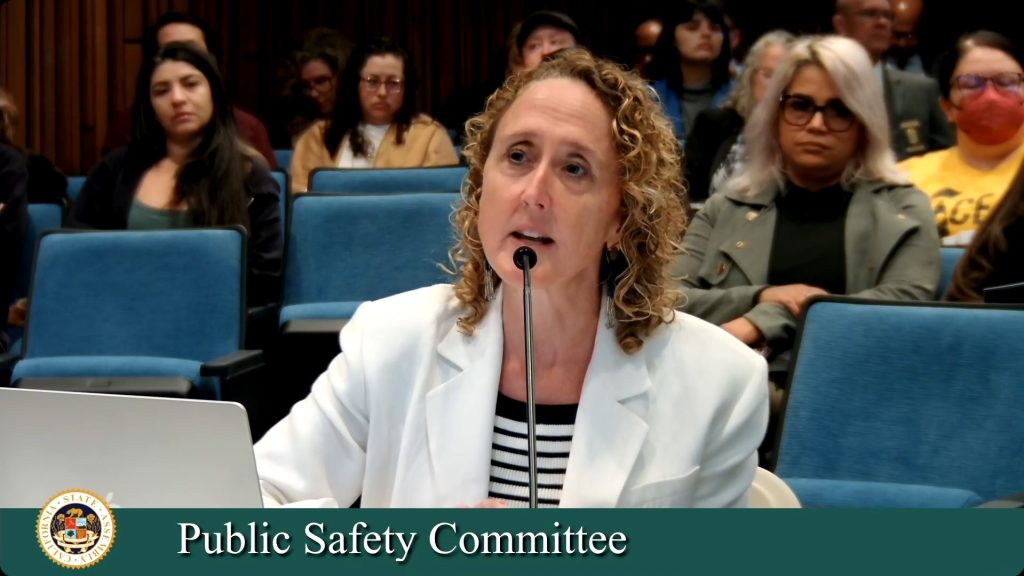Ray Bonner discusses "Anatomy of Injustice"
-By Gilien Silsby
It took him more than a decade, but after much perseverance, Pulitzer-prize winning journalist and author, Ray Bonner, published "Anatomy of Injustice: A Murder Case Gone Wrong,” the haunting story of an innocent man condemned to death and his lawyer's efforts to save him.
Bonner, who practiced law before turning to journalism, spoke to a packed audience at USC Gould School of Law recently about his coverage of the story, which probes the heart of the American justice system.
“With ‘Anatomy of Injustice,’” Ray Bonner has given us a powerful book that explores in excruciating detail Mr. Elmore’s case from the inept investigation to the outrageous trial and ultimately to the successful appeal. Because of the thoroughness of the research and Bonner’s compelling narrative, it is a wonderful story to share with students who are exploring—for the first time—issues surrounding the death penalty.”
The event, which drew about 150 students and faculty, helped mark Death Penalty Awareness week at USC.
“I’m not sure where you all stand on the death penalty, but I think I might change a few minds today after I tell you the story of Edward Lee Elmore,” Bonner said.
In his book, Bonner makes a convincing argument that 23-year-old Edward Lee Elmore did not murder 76-year-old Dorothy Edwards in 1982. Elmore, who did odd jobs for the woman, was arrested a day after the murder, and charged with first-degree murder. A few months later, a jury found him guilty after deliberating for less than two hours. He subsequently spent decades on death row in the South Carolina.
Bonner stumbled upon the case after being dispatched to Texas to work on a death penalty story that looked at whether innocent people had been put to death. They found grave miscarriages of justice and worked on the story for weeks.
Through those stories, Bonner heard about Elmore’s case, but was unprepared for what he found. Despite little evidence that Elmore was connected with the murder, he was the only named suspect in the case. In addition, Bonner believes investigators mishandled - and even planted - evidence, and prosecutors engaged in rampant misconduct.
“They found Elmore’s fingerprint outside the door of the house, which isn’t surprising since washed the windows two weeks prior,” Bonner said. “But they also said they found 42 of Elmore’s pubic hairs on the bed. Well, anyone knows that this amount found is unheard of. That would wind up in the Guinness Book of World Records. No more than 10 hairs are typically found at rape scenes.”
Investigators took dozens of pictures of the house, including a photo of the bed in the adjacent guest room, untouched by the crime. However, only one photo was taken of the bed where the crime occurred. “In this photo, an investigator is sitting on the bed clearly contaminating the crime scene,” Bonner said. “To top it off, they never even took the sheets into evidence. The police and prosecution didn’t just withhold evidence, they manufactured evidence and planted evidence.”
Years after Elmore had been sentenced to death, attorney Diana Holt became interested in the case. She had recently graduated from University of Texas Law School, and had battled her own demons. Abused by her stepfather from the time she was three years old, she landed in a series of abusive marriages and relationships. When her husband threatened to kill her, she went to the authorities. They said they couldn’t press charges because it was her word against his.
“That’s when she decided to go to law school,” Bonner said.
She earned her undergraduate degree at Southwest Texas State and law degree at the University of Texas. There, she became committed to representing men and women on death row.
“Why did I decide to spend more than 10 years writing this book? One of the reasons was Diana Holt, Elmore’s attorney. She relates to her clients like no other lawyer,” Bonner said.
Holt worked on Elmore’s case though post-conviction review, and ultimately was responsible for saving Elmore. The 4th District Court of Appeal found deceit and dishonesty on the part of investigators and ordered a new trial. To avoid another long trial, prosecutors said Elmore would be released if he pleaded guilty.
“The tragic part of this story is Elmore only got out of prison after 30 years by pleading guilty to a crime he didn’t commit,” Bonner said. “There will only be justice in this case when Elmore is exonerated.”

















